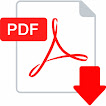English Alphabets With Pictures
 |
| English Alphabets |
An alphabet is a standard set of letters (
basic written symbols or graphemes ) which is used to write one or more
languages based on the general principle that the letters represent phonemes (
basic significant sounds ) of the spoken language . This is in contrast to
other types of writing systems , such as syllabaries ( in which each character
represents a syllable ) and logographies ( in which each character represents a
word , morpheme , or semantic unit ) . The Proto - Canaanite script , later
known as the Phoenician alphabet , is the first fully phonemic script . Thus
the Phoenician alphabet is considered to be the first alphabet . The Phoenician
alphabet is the ancestor of most modern alphabets , including Arabic , Greek ,
Latin , Cyrillic , Hebrew , and possibly Brahmic . According to terminology
introduced by Peter T. Daniels , an ' alphabet is a script that represents both
vowels and consonants as letters equally . In this narrow sense of the word the
first " true " alphabet was the Greek alphabet , which was developed
on the basis of the earlier Phoenician alphabet . In other alphabetic scripts
such as the original Phoenician , Hebrew or Arabic , letters predominantly or
exclusively represent consonants , such a script is also called an abjad . A third
type , called abugida or alphasyllabary, is one where vowels are shown by
diacritics or modifications of consonantal base letters , as in Devanagari and
other South Asian scripts . There are dozens of alphabets in use today , the
most popular being the Latin alphabet ( which was derived from the Greek ) .
Many languages use modified forms of the Latin alphabet , with additional
letters formed using diacritical marks . While most alphabets have letters
composed of lines ( linear writing ) , there are also exceptions such as the
alphabets used in Braille , fingerspelling , and Morse code . Alphabets are
usually associated with a standard ordering of letters . This makes them useful
for purposes of collation , specifically by allowing words to be sorted in
alphabetical order . It also means that their letters can be used as an
alternative method of " numbering " ordered items in such contexts as
numbered lists and number placements.






0 Comments
Please do not enter any spam link in the Comment box.